
Currant U-Pick Orchards in Orange County in Southeast NY in 2024, by county
Below are the U-Pick orchards and farms for currants that we know of in this area. Not all areas of any state, nor even every state, have currants orchards that are open to the public. If you know of any others, please tell us using the add a farm form!
Remember to always check with the farm's own website or Facebook page before you go - or call or email them if they don't have a website or Facebook page. Conditions at the farms and crops can change literally overnight, so if you want to avoid a wasted trip out there - check with the farm directly before you go! If I cannot reach them, I DON'T GO!
PLEASE report closed farms, broken links and incorrect info using the "Report Corrections" form below.
Orange County
- Lawrence Farms Orchards - Apples, strawberries, sweet and tart cherries, vegetables, Peaches, Sweet Corn, Grapes, Prunes, raspberries, Plums, apricots, currants, Pears, peas, greens,
39 Colandrea Road, Newburgh, NY 12550. Phone: 845-562-4268. Email: jlaw614@aol.com. Open: spaces, well-groomed picking areas, play area, farm animals, and a corn maze in summer. Click here for a map and directions.
Lawrence Farms Orchards Facebook page. . Our Spring/Summer Pick Your Own season begins with fresh, juicy, sweet strawberries, usually starting in mid-June. During this season we also offer for picking English Shelling Peas, Sugar Snap Peas, several Lettuce varieties, Beets and Greens, Red and Black Currants, and Gooseberries. Toward the end of June we also have Pick Your Own Sweet and Tart Cherries. We open of our Summer/Fall Pick Your Own season in mid-August for tree ripened Peaches, Sweet Corn, and early variety of Apples Throughout the fall season we offer later ripening varieties of Apples, as well as Seedless and Table Green Beans, Tomatoes, many varieties of Hot and Sweet Peppers, Cabbages, Beets, Spinach, Eggplant, Broccoli, and Pumpkins. please call or check our "Plan Your Trip" page first for crop availability (Note: They have a comprehensive harvest calendar on their website). Weather conditions sometimes change picking schedules and availability. 2022 Admission:$7 Monday to Thursday and $10 Friday, Saturday and Sunday (children under 2 free) Season passes available. Time: 9am; 4pm Daily. Our available apple varieties are Honey Crisp, Cortland, Fuji, Macoun, Ozark Gold, Macintosh, Aceymac, Jonamac, Empire, Golden Delicious, Red Delicious, Jonagold, Mutsu, Autumn Gala, Cameo, Idared, Sun Crisp, Fortune, Northern Spy, Rome, Stayman Winesap, Candy Crisp, Pink Lady, Granny Smith, and Braeburn. We also have Concord Niagara Grapes, and Pears. Our vegetables are tomatoes, peppers, eggplant, kale, beans, Sweet corn, zucchini, zucchini flowers, squash, cabbage, turnips, mustard greens, beet greens, spinach, and Pumpkins. We will be here everyday from 9-4. We look forward to seeing all of our amazing customers. (UPDATED: September 24, 2022, JBS)
Comments from a visitor on September 09, 2012: (positive) "I was hesitant after reading some negative reviews about Lawrence Farms Orchard (ed: on other websites) in Newburgh NY but I'm so glad we gave it a try anyway. The staff were friendly and helpful. The fruit and vegetables were plentiful and reasonably priced. The farm is beautiful. The children's village is really creative and the kids loved it. All around a great experience!"
Comments from a visitor on July 01, 2010: (positive) "Just got back from a fantastic visit at Lawrence Farm Orchards and I cannot say enough wonderful words about our trip. Called in the morning to confirm what was available for picking. The owner was very specific about crop availability (spinach, peas (all kinds) lettuce, zucchini, and limited raspberries and gooseberries. He apologized for not having more fruit available which was unnecessary as we completely understand crops vary from day to day. I must say that the one previous negative review of the farm was a concern, but we took the chance and made the 40 minute trip to the farm and boy are we glad we did. When we arrived at the farm, he took the time to point out all areas of the farm as well as location of the crops and to go over when new crops would be ready for pick your own. The vegetables were magnificent. I have never seen lettuce that big and healthy before. The zucchini were also quite large and the spinach was also A+. He even told us we were more the welcome to verify the raspberry bushes if interested. The prices were great. The farm is huge with a variety of animals to look at and feed including goats, swans, chickens, ducks, and horses (though you can only really feed the swans/ducks and goats. The farm also has a great old fashioned children's village with wooden houses and interior furniture. Our children 5, 3, and 2 did not want to leave. As well as a quaint farm stand with wonderful jellies, jams, and other homemade goods. They also have food including pizza, hot dogs, french fries, ice cream, cider doughnuts, etc. to snack. We left with enough peas, spinach, lettuce, and zucchini to last quite some time and were amazed how cheap it all was. 10 pounds of zucchini, 2 pounds of spinach, 1 pound of peas, and a head of lettuce - 22 dollars - how can you go wrong. They have an abundance of crops for pick your own (in late July/early august they often have 12 different fruits and vegetables to pick) and also give you the option of filling out postcards which they mail letting you know when peaches, apples, strawberries, and Christmas trees are ready for picking. We will most definitely be back to Lawrence farms and everyone is looking forward to it. I highly recommend this farm as it has quickly become a family favorite. I am surprised someone had such a bad experience with Lawrence Farms because they were so welcoming, helpful and genuine. If you have the opportunity to visit, especially with kids, this is one place not to miss."
Comments from a visitor on May 24, 2010: (positive)) "I have visited about four times a year for the last three years and been very happy. It is a wonderfully kid-friendly location with big open It is far enough away from the city that it doesn't turn into a complete zoo like Westchester farms. It is true that cheaper farms can be found for adults who are doing serious picking, but for a great day with the family (especially with young kids) this user-friendly farm is a fantastic option."
Feedback
Currants Picking Tips, Recipes and Information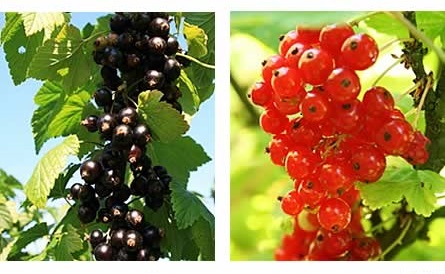
If you are about to pick currants either directly from a bush or from a local orchard or market, here's what you need to know to pick the best currants.
Currants are a fairly early crop, flowering soon after the last frosts in April and May, setting fruit in June, usually at the same time as strawberries in most areas (but check your area's harvest calendar and call the farm or orchard you are planning to go to a few weeks ahead).
Currants picking tips
When:
- Currants are typically ripe and ready for picking in the summer months, usually from late June to early August, depending on your location and the specific variety.
- Early morning is often the best time to pick currants. The berries are less likely to be stressed by the heat of the day, and they'll be at their juiciest.
- Try to avoid picking currants when they're wet from rain or dew. Moisture can cause the berries to deteriorate quickly and become moldy.
- Currant bushes can produce berries over a period of a few weeks. Check the bushes every couple of days to pick ripe berries and prevent overripening.
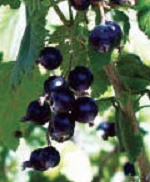
How:
- Make sure your hands are clean before you start picking to avoid transferring dirt or contaminants to the berries.
- Look for currant clusters that have plump, fully-colored berries. They should be slightly translucent and have a vibrant hue. Avoid berries that are underripe or overly soft.
- Hold the currant cluster gently but firmly, and use your other hand to pick the berries. Currants are delicate, so avoid pulling or tugging forcefully, as this can damage the branches.
- Proper Technique: Pinch the stem between your thumb and forefinger, then roll your fingers to detach the berries. This helps to prevent damaging the stem or the fruit.
- Leave some space between your fingers to prevent squishing the berries while you pick. Currants are small and can be easily damaged if you're not careful.
- Ripe currants should come off the stem with minimal effort. If you find yourself having to tug hard to detach a berry, it might not be fully ripe yet.
- While picking, keep an eye out for any signs of pests like aphids or caterpillars. Remove any infested berries to prevent spreading the issue.
- Use shallow containers, baskets, or colanders to collect the berries. This helps prevent crushing them under their own weight.
- Don't overfill your containers or try to pack the currants down.
- Respect the Plant. Be mindful not to damage the plant while you're picking. Avoid breaking branches or causing unnecessary stress to the bush.
After picking: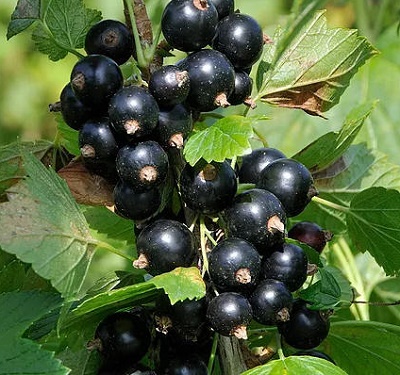
- After picking, gently transfer the currants into shallow containers or bags. Store them in the refrigerator as soon as possible to maintain freshness. Currants can also be frozen for longer storage.
- Avoid placing the picked currants in the sunshine any longer than necessary. It is better to put them in the shade of a tree or shed than in the car trunk or on the car seat.
- Cool them as soon as possible after picking. Currants may be kept fresh in the refrigerator for two or three days, depending upon the initial quality of the berry.
- Currants have a short shelf life compared to some other fruits, so plan to use or preserve them within a few days of picking. Remember that the specific techniques and tips may vary slightly based on the type of currants you are picking (red, black, or white currants), so it's a good idea to familiarize yourself with the characteristics of the particular variety you're working with.
Before you leave to go to the farm:
- Always call before you go to the farm - Currants are affected by weather (especially rain and cooler temperatures) more than most crops. And when they are in season, a large turnout can pick a field clean before noon, so CALL first! Always call before you go to the farm - Currants are affected by weather (especially rain and cooler temperatures) more than most crops. And when they are in season, a large turnout can pick a field clean before noon, so CALL first!
-
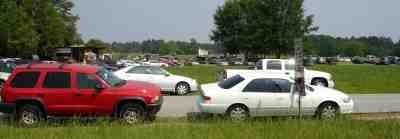 Leave
early. On weekends, then fields may be picked clean by NOON!
Leave
early. On weekends, then fields may be picked clean by NOON! -
Most growers furnish picking containers designed for Currants, but they
may charge you for them; be sure to call before you go to see if you need to
bring
containers.
If you use your own containers, remember that heaping Currants more than 3 inches deep will smush the lower currants. Plastic dishpans, metal oven pans with 3 inch tall sides and large pots make good containers. I like the Glad storage containers like the one at right. - Bring something to drink and a few snacks; you'd be surprised how you can work up a thirst and appetite! And don't forget hats and sunscreen for the sun. Bugs usually aren't a problem, but some deet might be good to bring along if it has been rainy.
When you get home
- DON'T wash the currants until you are ready to use them. Washing makes them more prone to spoiling.
- Currants are more perishable than blueberries or strawberries, so make a point of refrigerating them as immediately as possible after purchase. Temperatures between 34 F and 38 F are best, but, be careful not to freeze currants! (Fresh currants are highly prone to freeze damage).
- Pour them out into shallow pans and remove any mushed, soft or rotting currants
- Even under ideal conditions currants will only keep for a few days in a refrigerator, so for best flavor and texture, consume or freeze them as soon as possible after purchase.
- See my How to freeze berries page. (Unless you're going to make jam right away)
- Now, get ready to make Currants jam - It is VERY easy - especially with our free Currants preserves instructions - illustrated and easy or cherry pie filling
Currants Recipes, Canning, Jam, Jelly, and related resources
- Currants jelly
- Currant jelly (unthickened)
- Currants festivals
- Currant facts - useful, interesting and fun facts
Currants varieties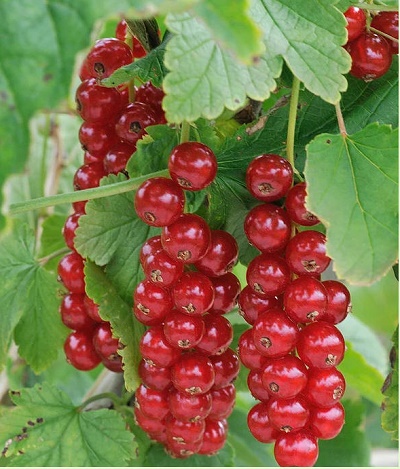
Here is a description of each type of currant
Red Currants:
- Small, round berries that are translucent and bright red when ripe.
- Tangy and slightly tart flavor, often used in jams, jellies, sauces, and desserts.
- Typically grow in clusters on deciduous shrubs.
- Rich in vitamin C and antioxidants.
- Commonly used in both sweet and savory dishes due to their tartness.
- Suitable for fresh consumption when fully ripe, but their intense flavor may be an acquired taste for some.
Black Currants:
-
Small, round berries that are dark purple to black when ripe.

- Distinctly strong, sweet-tart flavor with earthy undertones.
- Often used in jams, juices, syrups, desserts, and even alcoholic beverages.
- Grow in clusters on woody shrubs with distinctive five-lobed leaves.
- High in vitamin C, antioxidants, and other beneficial compounds.
- Considered to have potential health benefits due to their nutritional profile.
- The strong flavor can be polarizing, and some people might find it overpowering.
White Currants:
-
Similar in size and shape to red currants but are translucent to pale yellow or pink when ripe.
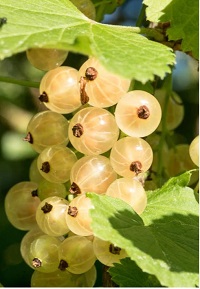
- Delicate and sweet with a mild, fruity flavor.
- Used in jams, jellies, preserves, and for fresh consumption, especially as a garnish.
- Grow in clusters on shrubs and are less common than red or black currants.
- Sometimes referred to as "albino currants" due to their light color.
- Lower in acidity compared to red and black currants, making them a milder option for those who prefer less tart flavors.
- Because of their light color, they can add an elegant touch to dishes and presentations.
Other Local Farm Products (Honey, Horses, Milk, Meat, Eggs, Etc.)
(NOT pick-your-own, unless they are also listed above)
- Farm markets and roadside stands
- Local Honey Finder
- Local Meat, Milk and Eggs
- Venues: Farms, Wineries, Orchards for your event, wedding or party
- Easter egg hunts
- Children"s consignment sales
- Fruit and vegetable festivals
- Winery tours and wine tastings
- Horse rides, stables, lessons, trails
- Maple Syrup farms and sugarworks
- Bed & Breakfasts on Farms, Wineries, Ranches and Orchards
- Pumpkin patches
- Corn mazes
- Zombie Paintball venues
- Christmas Tree Farms & lots
- Environmental resources
- Consumer fraud information
- Wholesale food sources
- Resources for Farmers
Looking for canning equipment and supplies?
Water bath canner with a jar rack
Pressure canners for gas, electric and induction stoves: Presto 23Qt or T-fal 22Qt
Canning scoop (this one is PERFECT)
Ball Blue book (most recent version)
Find Other types of farms:
- Easter egg hunts
- Children's consignment sales
- Farm markets and roadside stands
- Road trips and camping resources
- Local Honey, apiaries, beekeepers
- Local Meat, Milk and Eggs
- Consumer fraud and scams information
- Home canning supplies at the best prices on the internet!
- Maple Syrup Farms, sugarworks, maple syrup festivals
- Environmental information and resources
- Farms For Your Event for birthday parties, weddings, receptions, business meetings, retreats, etc.
- Festivals - local fruit and vegetable festivals
- Pumpkin patches and corn mazes
- Christmas Tree Farms and lots
Get the
most recent version of
the Ball Blue Book
Get the
most recent version of
the Ball Blue Book of Home Canning
Find other types of farms:
- Easter egg hunts
- Children's consignment sales
- Farm markets and roadside stands
- Local Honey
- Local Meat, Milk and Eggs
- Road trip and camping
- Pumpkin patches and corn mazes
- Christmas Tree Farms and lots
- Maple Syrup farms and sugarworks
Highly rated canning supplies:
- Regular Mouth Canning Lids with food-grade with BPA Free Silicone seals for Ball, Kerr Jars for Canning
- Canning accessories kit: funnel, jar tongs, lid lifter, etc
- Food Dehydrator, 400W Electric with 8 Trays, 48 hour Timer and Temperature Control 95-176℉, BPA-Free
- Water Bath Canner, 21 Qts with lid, Jar Rack, Speckled Black, cans 7 quart jars, 9 pint jars or 13 half-pint jars
- Air Fryer: Instant Pot Instant Vortex Plus XL 8QT Clear Windows, Custom Programming, 8-in-1
fruit dehydrator, Crisps, Broils, Roasts, Bakes, Reheats
- Pressure canner: All American 921, 21.5qt Pressure Cooker/Canner, never needs gaskets, Great for Gas, Electric or Flat Top Stoves - Made in the USA
- The Backyard Homestead: a guide to homesteading , on 1/4 acre, how to raise grains and vegetables; raise animals for meat, eggs, and dairy; and keep honey bees
- HEPA Air Purifiers for Home, Large Rooms for Allergies, Smoke, Pets. QUIET, Eliminates 99.97% of Dust, Pet Hair, Odors


